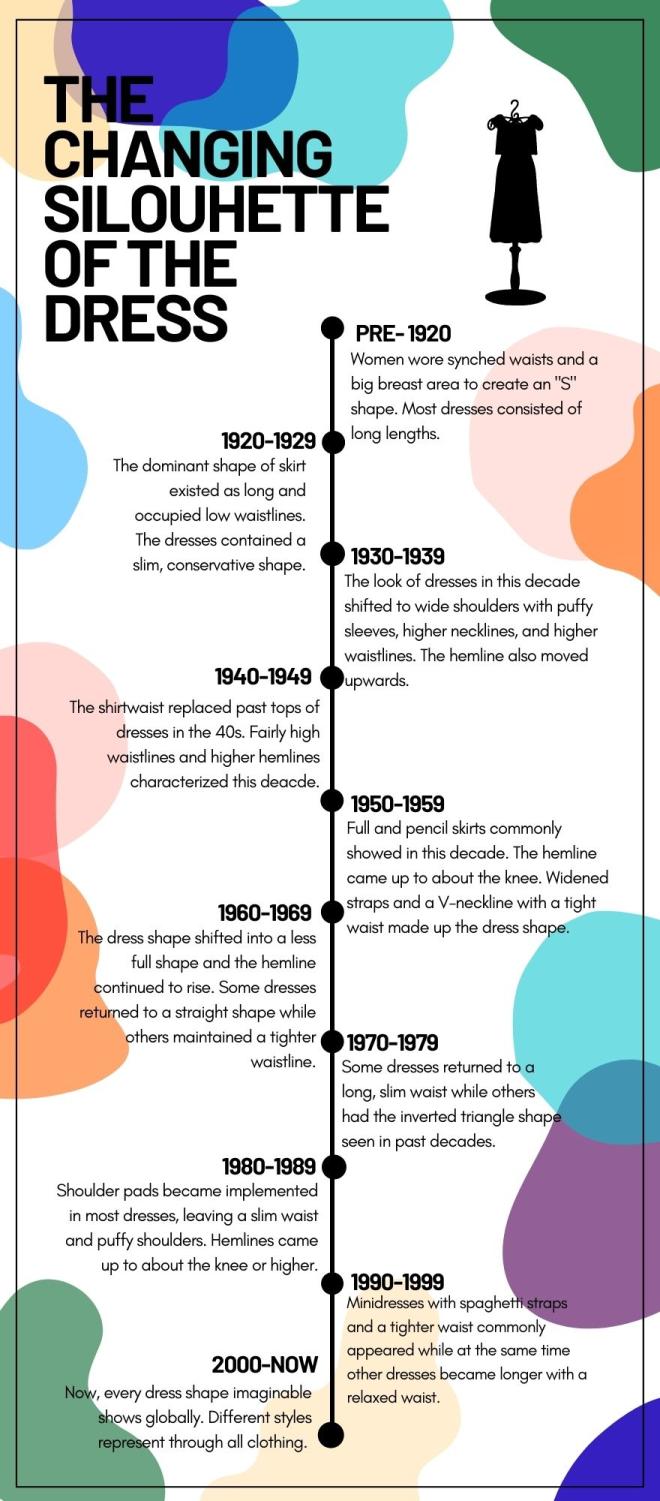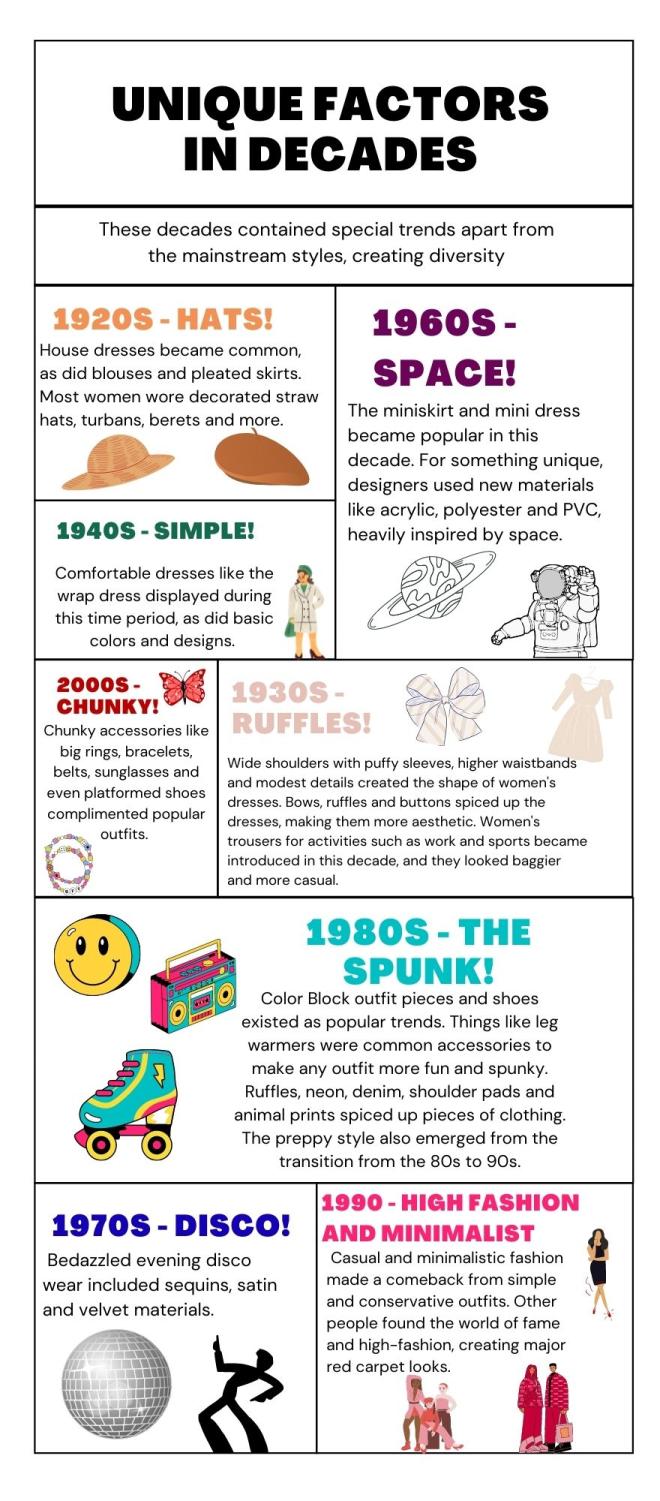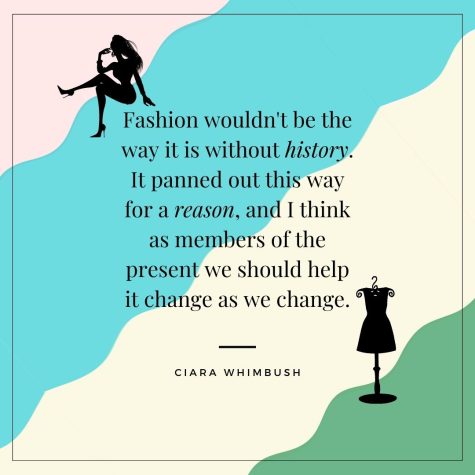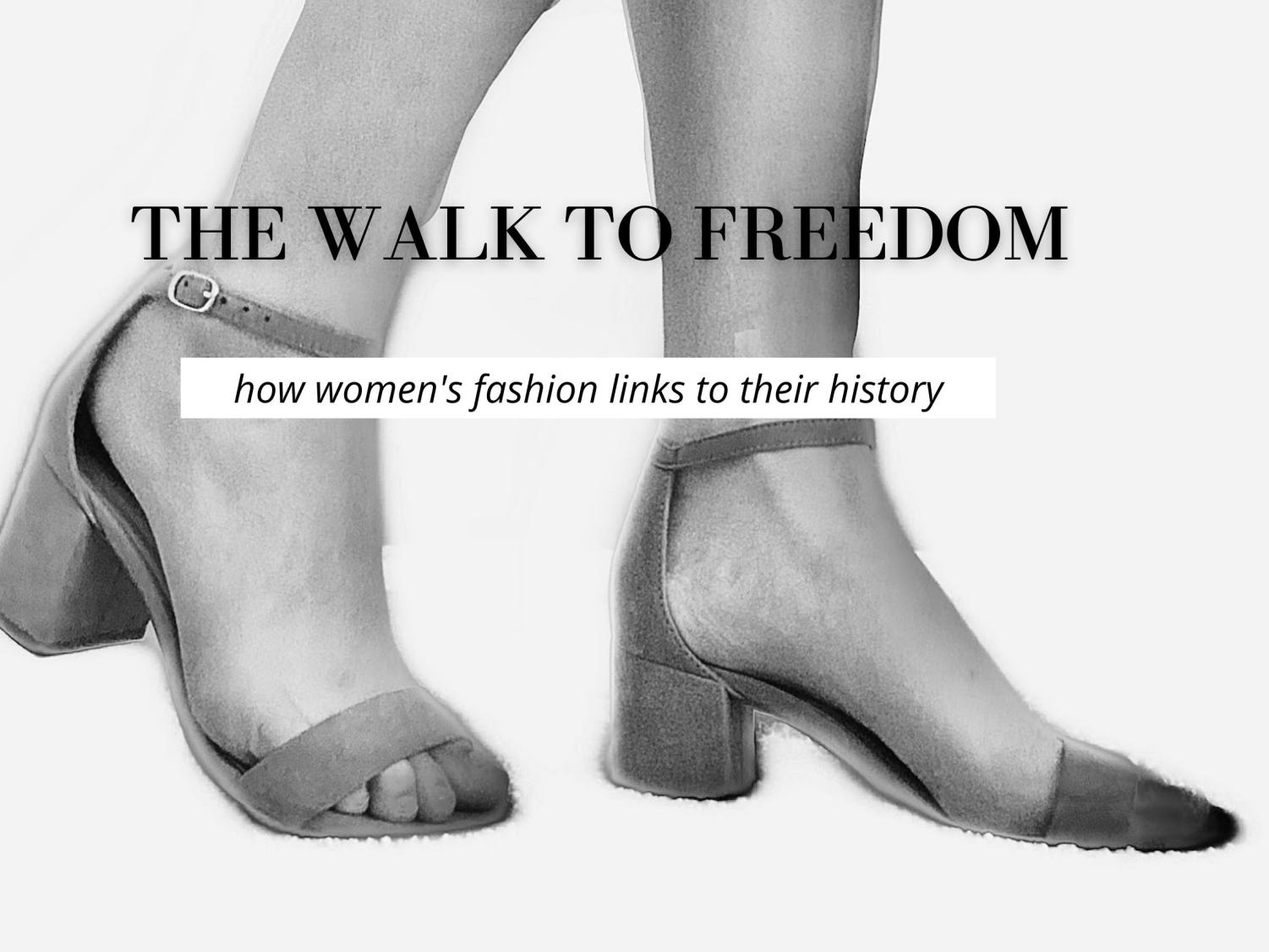The walk to freedom: how women’s fashion links to their history
April 15, 2022
Women’s fashion changes constantly, and has changed immensely through the last century. Women’s rights evolution influences these fashion eras and explains why the fashion industry appears the way it does now. As women fought to gain more rights and freedoms their clothes changed along with it. The fearfully slow fight for freedom clearly shines through the different outfits women wore across the past century.
“We should express ourselves, wear what we want… It [Fashion] has the power to fill us with joy, the joy of freedom to choose for ourselves how we want to look, how we want to live- a freedom worth fighting for. And fighting for freedom, protest, comes in many forms,” Kaustav Dey said.
Previous to the 1920s, women occupied the role of cooking and cleaning in the household. They lived with little to no rights and no freedom; their entire lives revolved around the man of the house. They mostly wore tightly fitting corsets for a tiny waist, constricting their movement and sometimes causing health issues. From the 1920s to the 2020s women struggled to express themselves through clothing, due to the tight hold men possessed on them. This time period allowed for a major transition: women would finally work jobs and gain equality.
“I feel like fashion trends are more diverse now just because of how diverse the women actually are now. In the past, the only mainstream fashion you’d get was from rich white women and no one else had much of a say. Now, there are so many more people who contribute to fashion and who are actually listened to,” freshman Laila Sain said.

Widely known as the classic flapper era, the 1920’s allowed women first to receive a taste of independence and expressed it through their clothing. Signed in 1919, the 19th amendment gave women the right to vote and proved to women they could work up to the same rights as men. Flapper girls wore flapper dresses and other accessories to push the barriers of freedom for women. They became perceived as immoral and immature by the majority of the population but truly represented the first slip of freedom for women. This urged more women to advocate for themselves and push for rights.
The 1930s shifted America into a more conservative and sophisticated decade. Numerous women with the traditional role of a housewife wore common house dresses. “Hooverette” dresses became a similar version of these garments. Additionally, the Great Depression caused a number of women to acquire employment during this time period and their clothes changed according to the place of work. The addition of women into the workforce began a revolutionary moment because not only did they prove to men that they could work, but they proved their purpose to themselves.
The 1940s historical events, such as World War II, influenced clothing tremendously. U.S. rationing, due to the war, created the need for more efficiently produced clothes. A plethora of people continued to wear old clothes when it became hard to find and make new clothes. As more women joined the workforce, it became more common for them to wear pants, overalls and trousers. When masses of women began to wear trousers, made primarily for men, it fostered feelings of inclusion and importance.
Typical dresses in the late 1940s still resembled uniforms, with simple boxy shoulders and mid-length fabric. Damage from WW II brought about a simple, cheap dress style. The “New Look” emerged after WW II, originating from French fashion designer Christian Dior, now creator of the Dior brand. The style rounded the boxy shoulders and complimented women’s body shapes. Dresses became longer and looked fancier and more stylish. This change in style symbolized the end of the war and women could return to their usual feminine styles. The New Look then transitioned into the 1950s, where it continued to evolve.
The shape of these dresses popped up everywhere and the style appeared in a variety of clothing. Although numerous protesters pushed women to return to their prior roles, they still wanted to wear more casual clothing such as trousers while working. Pants, sportswear, playsuits and more became normalized as casual wear for women during this time period and the gender roles gradually weakened.
WW II eventually came to an end and as a result, the economy strengthened, causing people to earn more money. Without the need for women to work in factories anymore, they could finally return to how things once existed, but the taste of freedom created new ideals.
While various early 1960s fashion trends appeared elegant, similar to past decades, new styles emerged due to world events. Pop-art and space-inspired 1960s wear, and although the dresses maintained the feminine shape; new patterns, colors and a shorter length characterized the decade. Additionally, the Equal Pay Act, signed in 1963 prohibited gender-based wage discrimination and became a significant step toward women’s equality.
At the time, the U.S. won the space race against the Union of Soviet Socialist Republics (USSR), now known as Russia. In 1957 the USSR launched Sputnik, the first satellite to orbit the earth, kicking off this space race. Excited to learn about what existed beyond the earth, people made new, space-inspired fashion creations. Space-like colors and images decorated the clothing. Technology improved constantly and TV communicated clothing globally, creating widespread pop culture.
“Social media influenced fashion for sure- particularly its main users- teens. I think teenagers play a huge role in influencing fashion. We’re the largest demographic to cultivate change online, and we all know the internet is a great way to popularize anything,” freshman Ciara Whimbush said.
The commonly known hippie style also emerged in the 60s following the hippie movement. A diverse group of people wanted to express their true feelings through their fashion, and that created “hippies”. They wanted equality for all and attempted to destroy societal norms through this style. The hippie style showed a lot of patchwork, crochet, knitting and embroidery, consisting mostly of loose and flowy items.
The 1970s decade created a major change for both women and their fashion, introducing bolder colors and patterns. Various 70s styles stole inspiration from the 1940s, boxy and baggy, but with the addition of glamorous disco designs. The wide range of styles included prairie dresses (mid-length and floral), inspired by the 30s and 40s, hippie fashion, athleticwear and the rise of disco nightclub wear. Another popular style in the 70s became Bohemian or Boho. Boho looks similar to the hippie style, aiming for an expression of relaxed fashion. It provided an alternative to the regular way of dressing, combating the norms.
The Gay Liberation movement, women’s rights movement and disco-pop music artists inspired new, funky styles. The women’s movement peaked in the 70s, causing women’s clothing to fluctuate. With the Gay Liberation movement, women expressed sexual freedom and what they wore followed. Women could wear more masculine clothing because not only did they not need to work as a housewife, but they did not feel as pressured to marry a man at all. As women gained more rights and freedom, they gained more diversity in their clothes and could change according to their activities and personalities.
The 1980s, a memorable time period for most, takes its mark as the “big and bright” decade. Sandra Day O’ Connor became the first woman to serve on the supreme court. She majorly represented the progress women had made in their fight for equality. Similar to the 1970s, countless people realized how to express themselves through their fashion. Street-style fashion, such as baggy jeans and jackets, became popular. As seen in the 70s, jumpsuits and tracksuits made an appearance outside of just athletic wear, and out of the house, casual wear became popular.
Most widely known for the bold expressions and high levels of confidence most people possessed, this decade allowed a variety of different clothing. It created different aesthetics and trends, grouping people by their clothing choices. For example, brightly colored leg warmers, gloves and funky earrings expressed the new style.
The 1990s consisted of a variety of styles from all the previous decades. Women still fought for equal job opportunities, pay and rights as men. Numerous women still reminisced about the preppy and funky styles from the 80s, but a number of people went back into even earlier decades to create vintage outfits and styles.
Sportswear from the 80s continued into the 90s with comfortable athleisure wear, leggings and oversized sweatshirts. Numerous people found that they did not need to stick to a specific style. Second-hand clothing stores became popular businesses due to the popular demand for early vintage clothing, causing the influence of the grunge fashion style. Low-waisted jeans and crop tops brought the new styles of the next decade.
The 2000s offered a wide variety of clothes because of fast fashion brands and stores. A variety of trends boomed and then disappeared quickly. It also introduced the Y2K style, including low-rise jeans, cropped tops, yoga pants and more. After finally gaining rights, women felt more comfortable in expressing themselves, which created a variety of styles and cliques. Hip hop/street-wear, emo, scene and punk styles emerged that continue to characterize styles now.

The 2010s housed the introduction of technology, it connected people from all around the world and influenced people through the use of mass media. It brought back a plethora of old styles and introduced new fashion such as festival fashion, minibags, bomber jackets, skinny jeans, mom jeans, crop tops, major logos and biker shorts. At this time, women closely reached the goal of equal opportunities. The gender pay gap declined and affirmative action helped women find more job opportunities.

Today’s world in the 2020s offers the acceptance of every style and outfit. Old trends come back constantly, yet new trends still emerge. Fashion remains a way to express beliefs and thoughts in safe ways. This sort of self-expression shows throughout the entire past century, and still occurs now.
“With gender roles changing worldwide, and society as a whole realizing there’s autonomy in fashion, the clothes and trends that are so popular have moved and shook. Women have the opportunity to feel more liberated in their fashion choices, no matter how that liberation looks,” Whimbush said.
